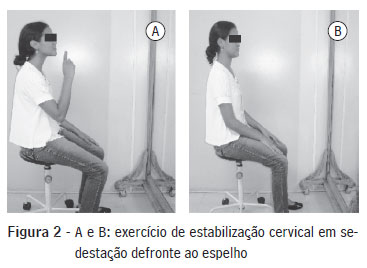INTRODUCTION: Temporomandibular disorders (TMD), can alter the dynamic equilibrium of structures, leading to a series of signs and symptoms of TMD, with pain being the main one. The TMD affects much of the world's population, making it essential to develop therapeutic techniques for its treatment. OBJECTIVE: The objective of this study was to assess the effectiveness of physical therapy in a patient with TMD. MATERIALS AND METHODS: Research experimental, a case report with a patient with severe temporomandibular, physiotherapy techniques with deactivation of trigger points, joint mobilization, segmental stabilization, and functional exercises, being held twice a week lasting 30 minutes for eight weeks. RESULTS: The patient showed improvement in pain, muscle function, range of motion and posture. Therefore, we conclude that physical therapy intervention have the potential to improve the clinical TMD, along with other areas because it is a multifactorial disease.
Temporomandibular joint; Temporomandibular disorders; Physiotherapy



